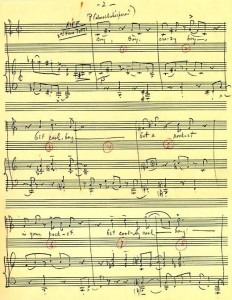
Leonard Bernstein
Credit: http://userserve-ak.last.fm/
The music theorist Johann Joseph Fux called the tritone the diabolus in musica (the Devil in music) in his 1725 theory book and other theorists of the 18th century followed him in naming this feared interval.
Composers avoided widespread use of the triton until the Classical era when it became a common part of the composition process of cadences – having a bit of tension before the release of the end of the phrase, but was used in a very limited way – the Devil still had a bit of bite!
Composers such as Liszt in the Romantic period used the tritone deliberately to evoke the Devil in works such as his piano sonata commonly called the Dante Sonata (or, to give it its full name, Après une Lecture de Dante: Fantasia quasi Sonata (After a Reading of Dante). Once the tonal system was discarded by twelve-tone composers, the interval lost its ability to frighten but still makes an appearance in popular music.

Credit: http://www.westsidestory.com/
In this recording, as Tony sings about Maria, her name seems like an echo of his thoughts until 00:40 where he emphasizes the name of his beloved and we have the leap to the tritone resolving on the last syllable of her name.
Bernstein: West Side Story: Maria
The use of the tritone gives us an idea of what lies ahead for our doomed couple – the Devil will have his say in Tony’s murder and Maria’s own closed future.
Keep an eye out for further articles on the appearance of the Devil in his many manifestations in music as a tempter of innocents, as a bedevilled violin, and a dancing clarinet.




I hate to contradict the author of this article concerning the tritone, but I have to say that a perfect fourth consists of five semi-tones or half-steps, not six semitones. It is the tritone that has six semitones.